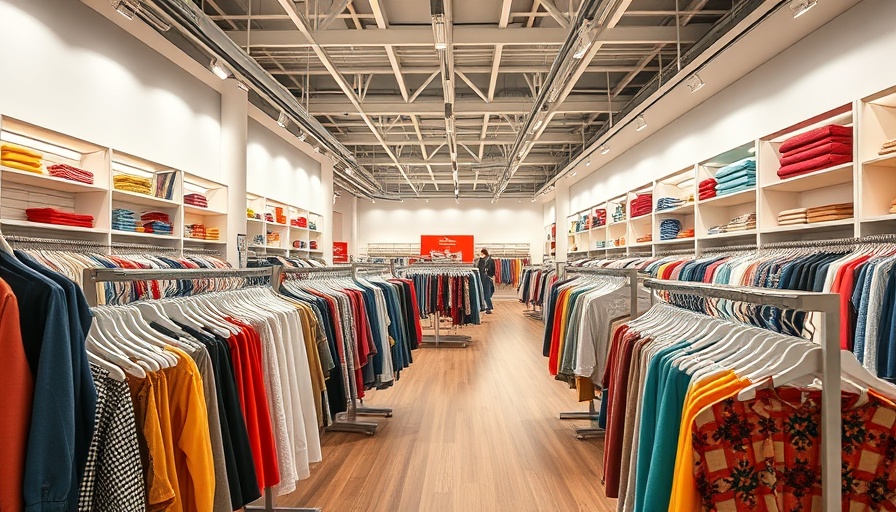
The Surge in Orders: A New Dawn for U.S.-China Trade
In a remarkable turn of events, U.S. retailers are ramping up their orders for Chinese goods as the thaw in tariff tensions between Washington and Beijing brings fresh vitality to international trade. With major retailers like Walmart leading the charge, businesses are racing against time to stock their stores ahead of the bustling summer shopping season, which commences in late May.
The recent decision to cut U.S. tariffs on imports from China—a dramatic reduction from 145% to 30%—has acted as a catalyst for an uptick in orders. Logistics companies such as Portless have reported a surge in activity, with clients eager to kickstart their inventory replenishment. CEO Izzy Rosenzweig explains, "Once the tariff cut was announced, our clients said, ‘we are in go-go-go mode.'" This urgency reflects a deep-seated necessity for businesses to prepare for consumer demand amid fluctuating trade conditions.
Historical Context: Tariffs and Their Impact on Supply Chains
This latest news isn’t occurring in a vacuum but comes on the heels of a tumultuous trade relationship that has seen tariffication drastically affect how goods cross international borders. Previous tariffs imposed by the Trump administration resulted in a 50% decline in container bookings from China during April, showcasing the fragility of supply chains heavily reliant on timely orders and shipments.
The logistics landscape relies not just on timing but on understanding historical patterns that dictate when goods should be ordered and shipped. Typically, shipments for summer merchandise commence as early as late winter; however, the stark increase in tariffs had a cascading effect, pushing many businesses to hit pause. As we enter a new phase with the recent tariff reductions, companies will need to recalibrate their operations quickly.
Real-Time Ramifications: Freight Rates and Shipment Dynamics
Despite the flurry of activity, stakeholders must remain vigilant about the freight landscape. As some manufacturers like a toy supplier from Dongguan noted, logistical operations surged, but freight rates did not spike immediately. Current data from Freightos indicates only a 3% increase in the spot rate for shipping containers from China, a stark contrast to the steep rates seen earlier in the year.
This situation reveals a critical insight: while demand for shipping logistics might be rising, the capacity to fulfill those orders remains nuanced. Ultimately, it suggests a balancing act between supply availability and cost-effectiveness. It’s essential for retailers to harness this moment of opportunity while counterbalancing potential risks tied to freight costs.
Consumer Behavior Trends: What This Means for the Average Shopper
Interestingly, the dynamics of U.S.-China trade not only impact businesses but also average consumers. As products flooded back into stores in time for summer, shoppers eyeing deals on sundresses, bug repellents, and swimwear may experience price shifts influenced by logistics costs and inventory levels. The interconnectivity of these supply chain nuances brings to light the vital relationship between international trade policies and consumer pricing.
As we look towards the anticipated increase in goods on shelves, understanding how these factors intertwine becomes essential for consumers aiming to budget smartly for the upcoming shopping season.
Future Predictions: The Road Ahead for Retailers and Manufacturers
What does the future hold for U.S.-China relations and the larger retail landscape? The possibility of further tariff adjustments looms large, and businesses would do well to adopt a forward-thinking approach amidst ongoing trade discussions. While the short-term outlook appears promising with orders being placed in a frenzy, the long-term trajectory will depend heavily on political and economic climates.
Moreover, companies are likely to invest more in diversified supply chains to insulate themselves against future disruptions, perhaps exploring not only Chinese suppliers but also manufacturers from other regions.
Conclusion: Take Action Now or Risk Falling Behind
As retailers embrace this pivotal moment of opportunity, businesses and consumers alike must remain informed. The complexities of tariffs, shipping logistics, and consumer trends hint at a broader narrative that is shaping economies on a global scale. Only by understanding these dynamics can individuals and companies position themselves effectively.
This article emphasizes the importance of staying alert to changes in international trade policy, the impacts of tariffs, and how these factors realistically influence what shoppers will find in stores. Find ways to adapt and innovate in your business practices. Collectively, it’s clear that action in the present will dictate success in the future.
 Add Row
Add Row  Add
Add 




 Add Row
Add Row  Add
Add 

Write A Comment